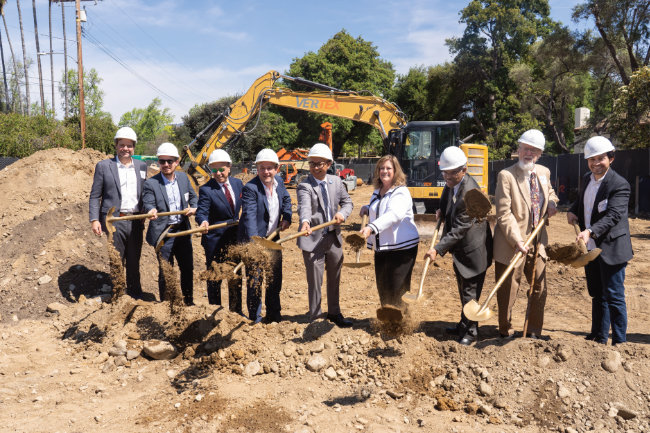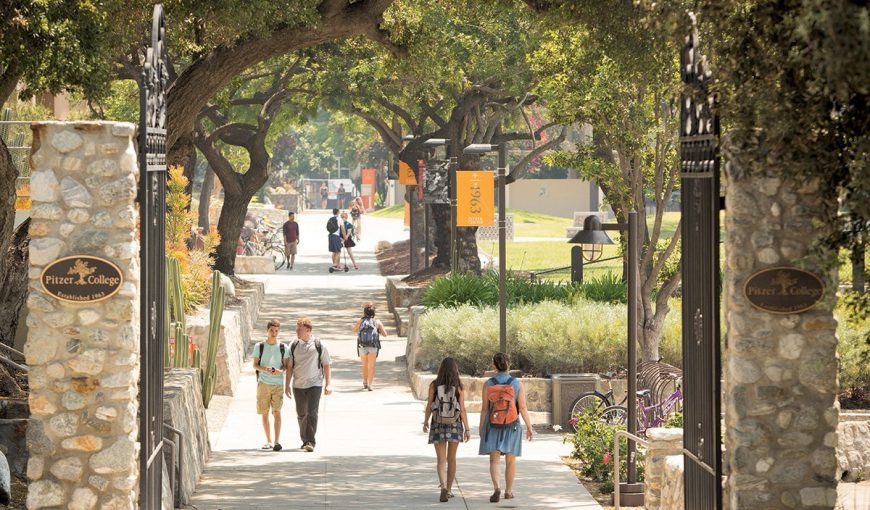Council establishes cannabis tax rate, will levy deliveries

The Claremont City Council approved a tax rate for commercial cannabis businesses Tuesday, opening the door for the city to collect revenue on marijuana deliveries. Courier photo illustration/Steven Felschundneff
by Steven Felschundneff | steven@claremont-courier.com
The Claremont City Council unanimously adopted the rates for its cannabis business tax Tuesday, and in a tandem motion cleared the way to start collecting the tax on legal marijuana deliveries into the city.
During November’s midterm election, Claremont voters made it clear they wanted to tax commercial cannabis in the city when Measure CT passed with 61% of the vote. That ballot initiative gave the city the green light to build a framework for the tax, even though retail marijuana and other commercial cannabis businesses are still not permitted in Claremont.
Tuesday’s action authorizes the city to begin collecting a 6% tax on any cannabis business outside of Claremont that delivers to customers inside the city, which could generate substantial revenue.
“Recent estimates suggest that the City could generate $140,000 to $170,000 per year from the taxation of cannabis businesses delivering to addresses within the City,” according to a staff report.

The Claremont City Council approved a tax rate for commercial cannabis businesses Tuesday, opening the door for the city to collect revenue on marijuana deliveries. Courier photo illustration/Steven Felschundneff
The council also approved separate specific tax rates for a wide variety of different businesses so that those levies are in place if the City Council should vote to make marijuana businesses legal here.
Measure CT established a range for the new tax from which the city, and ultimately the council, could adopt the actual tax rate. Voters approved a levy between 4% and 7% on retail businesses, whether storefront or delivery. It was the job of city staff and its consultant, HdL Companies, to analyze the market and come up with the final rates.
The goal, according to city staff, was to land on a tax amount that would be competitive without being so high that it discouraged future operators from opening businesses here.
The city proposed, and the council approved, the following commercial marijuana taxes: retail, 6%; distributor, 3%; manufacturer 4%; and testing laboratory, 2%.
Cultivation would be taxed at 3% of gross receipts or on a square-foot basis, whichever is higher. A business that uses only artificial light would be taxed at $10 per square-foot, mixed artificial and daylight would be at $7 a square-foot and exclusively natural light would be $4 a square-foot.
The council also approved a $2 per square-foot tax on cannabis nurseries, regardless of lighting source. These operations differ from cultivation because all they do is grow small plants or provide seeds and do not raise crops for harvest.
Finally, there would be a tax “by activity” on so called micro-businesses, defined as a single enterprise engaged in more than one taxable activity. For example, if an entrepreneur opened a retail store and was also a distributor and operated a nursery, then each of those activities would be taxed separately at the rates listed above.
There was no public comment on the cannabis tax during the meeting.
The council asked city staff and its consultant, Mark Lovelace, a senior policy advisor at HdL, how they arrived at 6% for the local tax.
Alex Cousins, a management analyst in the community development department shared a chart with the rates that other jurisdictions charge in Los Angeles County, including the proposed rates in Claremont.
“As you can see, [Claremont’s] rates are similar to our neighboring city of Pomona,” Cousins said.
Council member Jed Leano asked Cousins how the city and its consultant arrived at the suggested tax rate for retail businesses.
“We approved a range with the minimum at four and I was just curious if you could give me the basis for the recommendation at 6%?” Leano asked.
Cousins said the recommendation from marijuana industry experts was to avoid tailoring the tax rate just for deliveries, and to set the rate now at the same level the city would if retail cannabis sales were already allowed in Claremont. The rate the city settled on was on par with other jurisdictions that have cannabis businesses.
“Our tax is about midrange from what I have seen in the area,” Cousins said. “Six percent is what we are seeing cities move to, so some had very high rates and they felt the pressure from the cannabis businesses to lower that. We are seeing [other cities] going toward more where we are now.
“I just wanted to make sure we are not an outlier,” Leano said, “that we are not proposing a tax rate that is so woefully outside the norm that it’s not competitive.”
“What is the process if we land on a tax rate that ends up being too high? How difficult is it to then lower it?” Council member Jennifer Stark asked.
Cousins responded that the city would have to go through a typical public notification process, but that the tax rate could be changed by a simple council resolution.
Mayor Ed Reece asked how the city was going to audit deliveries into Claremont to ensure the tax is collected.
Cousins said HdL has prepared a list of current businesses delivering to the city and noted they all have to be licensed just like any other retailer, so the city will reach out to them and let them know the tax needs to be collected.
Lovelace said because the businesses are not based in Claremont, and in fact are not permitted here, the city’s tools for auditing are pretty slim. However, the competitive rate Claremont will levy could be an incentive for compliance.
“So, what you are looking at is trying to find a system that makes it, for one, easy to pay their taxes to the city,” Lovelace said. “Also, this gets back to the rate question. If the rates in the city are higher than other cities there’s less of an incentive to appropriately report the sales apportioned between the different jurisdictions. If the rates are competitive or lower than other jurisdictions [the retailer] can have an incentive to maximize the sales they are reporting to the city of Claremont.”









0 Comments